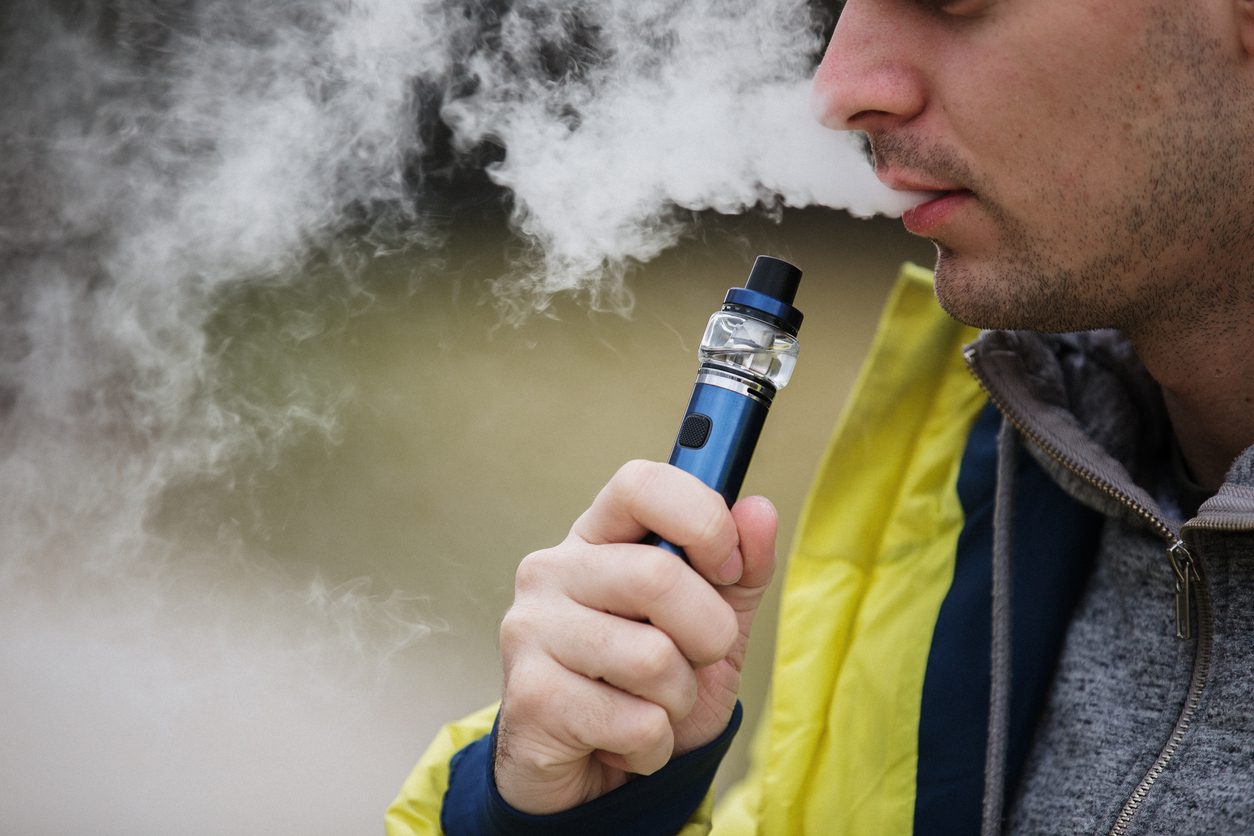
You Can
Quit Vapes and Other Tobacco Products
Are There Safe Smoking & Tobacco Options?
No! There are two things we know for certain –no matter the delivery method, tobacco is always harmful, and nicotine is addictive!
Vaping devices are also known as electronic cigarettes (e-cigarettes). They come in various forms, some look like regular cigarettes but they can also look like pens, flash drives or other common objects. They are battery operated aerosol devices that convert a chemical liquid – including high levels of nicotine – into a vapor. Most people think it’s just flavored water, but it doesn’t contain any water.
Vaping is not a safe substitute for cigarette smoking. Unlike the chemicals in cigarette smoke, the chemicals in the e-cigarette vapor — including nicotine — are absorbed directly into your bloodstream.
Smokeless tobacco products are made up of a blend of tobacco or entirely tobacco. These products are chewed, sucked or sniffed rather than smoked. This allows nicotine and other toxic chemicals to be absorbed through the tissues of the mouth or nose.
More Toxic Truth
Although vaping once had a reputation for being a safer alternative to cigarettes, a few factors may make it more dangerous than smoking, particularly for your heart.
If you, or someone you love, is ready to quit vaping—start by scheduling an appointment with your primary care provider. They can offer suggestions to help you transition off nicotine and the other harmful chemicals in e-cigarettes.
The Heart Connection
The risks that vaping has on the lungs is well-known, but using e-cigarettes also increases your chances of developing heart problems.
Most vaping devices contain nicotine – the most addictive drug in the world. When you take a puff, nicotine causes your arteries to stiffen and narrow. According to the American College of Cardiology, you’re 56% more likely to have a heart attack and 30% more likely to have a stroke. Vaping also boosts the plaque buildup in your arteries, leading to coronary artery disease.
Within minutes, vaping can cause additional problems for your heart, including:
Benefits of Quitting
When you quit vaping or stop using smokeless tobacco products, your body experiences several benefits almost immediately.
Quitting tobacco is hard, but it’s definitely possible. Boost your chances of success by asking your primary care provider for help.
Tips to Help You Quit
Making the decision to quit vaping or using smokeless tobacco is hard – many people can encourage you to quit, but the decision to quit is yours. Just like giving up cigarettes, having a plan in place can help you successfully quit.
Local & National Resources
- St. Elizabeth Tobacco Cessation program
- American Lung Association Freedom from Smoking®
- smokefree.gov
- Quit Now Indiana
- Quit Now Kentucky
- American Cancer Society Empowered to Quit
- Nicotine Anonymous
What’s preventing you from ditching tobacco? All forms of tobacco, including vaping and secondhand smoke are harmful. Talk to your primary care provider about quitting.
Related Articles
American Heart Association
Questions or concerns about your heart health? Look to us for answers. Call (859) 287-3045 to schedule an appointment with a St. Elizabeth cardiologist.
Youth E-Cigarette and Vaping Education
St. Elizabeth is committed to combating the vaping epidemic through education and care. The St. Elizabeth Foundation Vision Campaign funds educational resources for teachers, students, and youth leaders in Northern Kentucky, Southeastern Indiana, and Greater Cincinnati.
You Can Be a Healthier You
Call Us
For more information about Take Time for Your Heart or other Heart & Vascular Prevention and Wellness services, call
(859) 301-WELL (9355) today.



